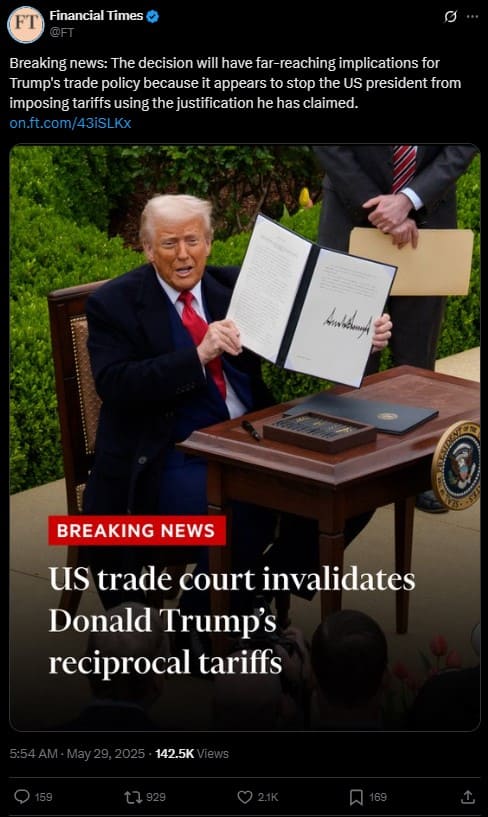In a major legal decision, the United States Court of International Trade has struck down former President Donald Trump’s 2025 “reciprocal tariffs.”
These tariffs were announced on April 2, 2025, a day Trump called “Liberation Day.” They were meant to add a 10% tax on most imported goods, with even higher tariffs on countries like China and those in the European Union.
Key Highlights
- Tariffs were up to 50% on some imports.
- Trump used emergency powers to impose them.
- The court said that was unconstitutional.
- Markets calmed down after the ruling.
- Congress must approve big trade changes.
What Happened?
The U.S. Trade Court recently ruled that Donald Trump’s 2025 “reciprocal tariffs” are illegal. These were tariffs (extra taxes on imported goods) Trump announced on April 2, 2025, calling it “Liberation Day.” The court said he didn’t have the legal power to make this decision without approval from Congress.
What Were the “Reciprocal Tariffs”?
On April 2, 2025 — A day Donald Trump called “Liberation Day”, he announced a bold new tariff policy. His plan? Impose a flat 10% tax on most goods entering the U.S., and even higher rates (up to 50%) on imports from countries like China, Germany, and other major trade partners.
Trump argued that the U.S. was being treated unfairly in global trade. He claimed these tariffs would “level the playing field” and protect American jobs. But he didn’t go through Congress. Instead, he used a law called the International Emergency Economic Powers Act (IEEPA), which is usually reserved for national security threats, not trade disputes.
Why the Court Rejected It
Earlier this week, the U.S. Court of International Trade ruled that these tariffs were illegal. A group of small businesses and 12 states had sued the government, saying the tariffs hurt their industries and violated the Constitution.
The court agreed. In its decision, the panel said Trump overstepped his powers. The IEEPA doesn’t give presidents the right to impose broad economic changes just by declaring a trade problem a “national emergency.” That kind of major decision, the court said, must go through Congress, not be made by the president alone.
What Happened After the Ruling?
The markets reacted fast. After months of uncertainty, investors welcomed the decision. Stock prices rose — the S&P 500 jumped 1.5% and the U.S. dollar gained strength. On the other hand, gold prices dropped as confidence in the economy improved.
For businesses that rely on imported goods from electronics to clothing, the news was a relief. Many had been struggling with the added costs caused by the tariffs.
Why This Ruling Matters
This case isn’t just about taxes on imports. It’s about presidential power and how far it can go.
The court sent a clear message: a president cannot use emergency powers to rewrite trade policy. Big economic decisions like this need to be debated and approved by lawmakers. That’s how the system of checks and balances in the U.S. is supposed to work.
Trump has said he plans to appeal the decision, but for now, this ruling sets a strong precedent that limits what future presidents can do unilaterally when it comes to trade.
Final Thoughts
The cancellation of Trump’s reciprocal tariffs marks an important moment in U.S. trade history. It protects the role of Congress and prevents future presidents from using emergency laws for economic actions.
For American businesses, especially small importers, the decision brings stability. And for the country as a whole, it’s a reminder that the rule of law still stands strong even in times of political drama.
